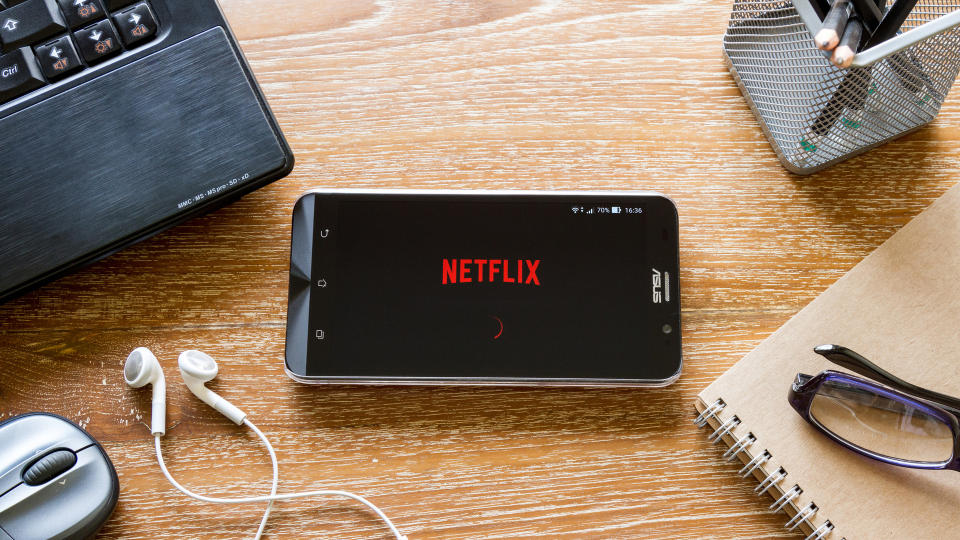How Rich Would You Be If You Invested In Netflix Stock Instead of a Subscription?

Former PayPal employees Chad Hurley, Steve Chen and Jawed Karim created YouTube in 2005, but the streaming revolution began in earnest two years later when Netflix launched the country’s first web-based video-on-demand service in 2007.
Money Expert Jaspreet Singh: Get Rich Through These 3 Investments
Learn: 3 Things You Must Do When Your Savings Reach $50,000
Terms like “binging” and “cord-cutting” soon became part of the American lexicon and couch potatoes everywhere grew more and more eyes. But, what if those eyes had been on their brokerage accounts instead of their increasingly enormous flat-screen TVs?
Here’s a look at where your net worth might be today if you had used the money spent on your Netflix subscription to invest in Netflix stock instead.
The Media Disruptor Made Early Investors Rich
Corporate executives Reed Hastings and Marc Randolph created Netflix in 1997, went live with Netflix.com in 1998 and launched a groundbreaking and Blockbuster-killing DVD-by-mail subscription service in 1999. On May 23, 2002, the public got its first crack at Netflix when its stock began trading on the Nasdaq at an IPO price of $15 per share.
As of Aug. 23, 2023, it has earned its original investors a return of 35,684%.
“If you had invested $10,000 in Netflix stock on August 1, 2003, 20 years later on August 1, 2023, you would have $4,386,200,” said Nancy D. Butler, a certified financial planner for more than 35 years and the owner of Above All Else, Success in Life and Business.
That, however, is an unlikely scenario.
“In 2011, Netflix stock had a 60.56% loss and in 2022, it had a 51.05% loss. Most people don’t buy and hold a stock for 20 years, especially when they see large losses in any year.”
Find Out: Dave Ramsey Used These 4 Investment Rules To Build His Wealth
How Much, Exactly, Have I Spent Watching Netflix?
Butler’s hypothetical doesn’t illustrate how you might have invested your streaming budget because — hopefully — you haven’t spent $10,000 as a Netflix subscriber.
Netflix introduced America to the concept of streaming video on demand in 2007, but it required members to subscribe to its traditional DVD-by-mail service to participate. On top of that, members paid according to how much content they consumed. For example, $18 a month bought you 18 hours of streaming.
What’s almost lost to history is that Blockbuster nearly won the rental wars with its Total Access program in 2006, which let subscribers receive DVDs in the mail and return them to the chain’s physical locations. But in 2008, Netflix fought its way off the ropes and brought streaming into the modern era with a consistent and streamlined subscription policy that made binging possible.
That’s where this storyline begins, presuming a standard-tier subscription level the entire time and rounding up Netflix’s prices by one penny for the sake of round numbers.
2008-2010: $9
In 2008, Netflix launched unlimited streaming of its 90,000-title library for $9 per month, where it would remain through 2010.
36 months at $9 per month: $324
2011-2013: $8
In 2011, Netflix lowered the price of its standard package to $8, but it made up for it by jacking up the cost of its DVDs, which still accounted for many of its titles. The result was nearly universal customer outrage and the 2011 stock price crash that Butler described. On Oct. 25, 2011, Netflix suffered its biggest single-day drop when shares fell 34.9% after the company reported a net loss of 800,000 subscribers.
36 months at $8 per month: $288
April 2014-October 2015: $9
In the spring of 2014, Netflix continued tinkering with its subscription tiers. While SD consumers could stay on for $8, those who wanted HD streaming had to spend another buck.
18 months at $9 per month: $162
October 2015-October 2017: $10
Netflix keeps its basic package at $8 while increasing its standard package by another dollar, where it stays for two years.
24 months at $10 per month: $240
October 2017-January 2019: $11
Netflix continues to phase all tiers to higher prices, with the cost of a standard subscription increasing by a dollar yet again.
14 months at $11 per month: $154
January 2019-October 2020: $13
Instead of continuing its phase-in, Netflix simultaneously hikes prices across all tiers for the first time in company history. This time, standard subscribers get a $2 increase.
21 months at $13 per month: $273
October 2020-January 2022: $14
With the pandemic making streaming more of a necessity than an amenity, Netflix sees room for another increase.
15 months at $14 per month: $210
January 2022 to the present: $15.50
At the start of last year, Netflix added $1.50 to its standard subscription price, where it remains today.
20 months at $15.50 per month: $310
And If I Had Invested All That Instead of Streaming It?
If you’ve been a Netflix subscriber since 2008 when the platform first allowed unlimited streaming, you would have spent $1,961 to binge “Squid Game,” “Stranger Things,” “Orange is the New Black,” and the rest of its hit shows between then and now.
In 2008, Netflix (NFLX) averaged about $4.10 per share, although that number accounts for two stock splits, a 2:1 before and a 7:1 later.
Therefore, the $1,961 you spent for a 15-year movie night could have bought you just over 478 shares of company stock. Today, Netflix is trading at around $408, which means you’d have $195,024 if you had invested in Netflix instead of watching it.
Really makes you think.
More From GOBankingRates
This article originally appeared on GOBankingRates.com: How Rich Would You Be If You Invested In Netflix Stock Instead of a Subscription?

 Yahoo Finance
Yahoo Finance 